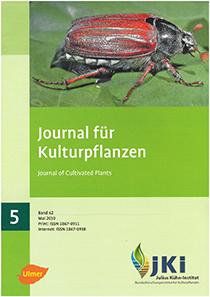The European cockchafer in Germany: Beloved and hated A contribution to its role in cultural history and the history of control
DOI:
https://doi.org/10.5073/JfK.2010.05.01Keywords:
Melolontha spp., European cockchafer, May beetle, white grubs, cultural history, controlAbstract
In Germany, the European cockchafer or May beetle is one of the most popular beetles among the people, but at the same time it is a dreaded pest insect in agriculture and forestry. In this overview, its importance in cultural history of Germany as well as the history of attempts to control this pest insect are reported. May beetles are eternalized in German songs and popular culture, they are mentioned in poetry and literature. Concurrently, they were used as food for human beings or animals and as fertilizer. The May beetle even served as model for the most popular German car, the VW beetle. On the other hand, huge damages caused by massive outbreaks of the field and forest cockchafer, Melolontha melolontha and M. hippocastani, respectively, have been well known in Germany for centuries, and different pest control measures have been developed and used. These comprised various methods of soil cultivation in order to prevent egg laying by female beetles and mechanical as well as chemical control of white grubs. Besides the anathema in the Middle Ages, control measures against the beetles consisted of huge collecting activities as well as chemical, biotechnical and biological control methods. Some of these measures are still useful today.
Downloads
Published
Issue
Section
License
The content of the journal is licensed under the Creative Commons Attribution 4.0 License. Any user is free to share and adapt (remix, transform, build upon) the content as long as the original publication is attributed (authors, title, year, journal, issue, pages).
The copyright of the published work remains with the authors. The authors grant the Journal of Cultivated Plants, the Julius Kühn-Institut and the OpenAgrar repository the non-exclusive right to distribute and exploit the work.







